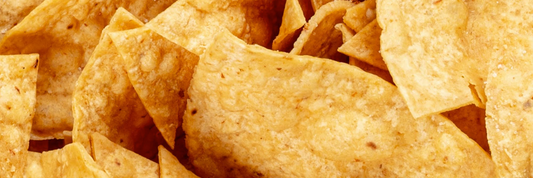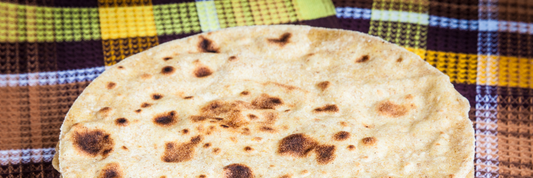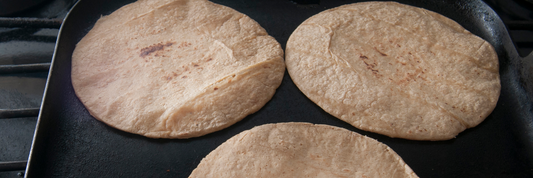When I first started cooking professionally, I noticed that many dishes called for clarified butter, but I wasn't entirely sure what made it different from regular butter. After years of working with both, I can confidently say that understanding clarified butter completely changed how I approach high-heat cooking. This golden liquid offers remarkable versatility and performance benefits that every home cook should know about.
What Is Clarified Butter?
Clarified butter is essentially butter with its milk solids and water removed, leaving behind pure butterfat. This process transforms regular butter into a clear, golden liquid that performs dramatically differently in cooking applications.
Regular butter contains three main components: butterfat (about 80-82%), water (15-17%), and milk solids (2-3%). The milk solids include proteins like casein and whey, along with trace amounts of lactose. When you clarify butter, you eliminate the water and milk solids, concentrating the butterfat content to nearly 100%.

How Clarified Butter Differs from Regular Butter in Cooking
The difference becomes apparent the moment you start cooking. Regular butter burns easily because its milk solids begin to brown and eventually char at relatively low temperatures. I've learned this the hard way when trying to sear steaks with regular butter - the result was often bitter, burnt flavors rather than the clean, rich taste I wanted.
Clarified butter eliminates this problem entirely. Without milk solids, it can withstand much higher temperatures without burning or developing off-flavors. This makes it perfect for techniques like sautéing vegetables, searing meats, or making delicate sauces that require consistent heat.
Clarified Butter vs Melted Butter
Many people assume that melted butter and clarified butter are the same thing, but they're quite different. Melted butter is simply regular butter that's been heated until liquid - it still contains all the water and milk solids. When melted butter cools, it returns to its original solid state with the same composition.
Clarified butter, on the other hand, has been processed to remove these components permanently. It remains liquid at room temperature much longer than melted butter and won't separate or become grainy when it cools.

Nutritional Overview
From a nutritional standpoint, clarified butter is fat-dominant, containing approximately 99% fat and virtually no carbohydrates or protein. It's rich in fat-soluble vitamins, particularly vitamin A and vitamin E. A tablespoon contains roughly 120 calories, all from fat.
The vitamin A content supports eye health and immune function, while vitamin E acts as an antioxidant. Some clarified butter also contains vitamin K2, which plays a role in bone health and cardiovascular function.
Clarified Butter vs Ghee – What's the Difference?
While clarified butter and ghee are often used interchangeably, they're actually distinct products with important differences in preparation, flavor, and shelf life.

Process
The manufacturing process reveals the key distinction between these two butter derivatives. Clarified butter involves heating butter just long enough to separate the water and milk solids from the butterfat. The process typically takes 15-20 minutes at medium-low heat.
Ghee requires a longer cooking process. The butter is cooked until the milk solids not only separate but also caramelize, developing a deeper color and nutty aroma. This extended cooking time - often 30-45 minutes - drives off more moisture and creates different flavor compounds through the Maillard reaction.
Flavor & Texture
I've noticed that clarified butter maintains a clean, smooth, and relatively neutral flavor profile. It tastes like pure butter essence without any of the complexity that develops during extended cooking.
Ghee, however, offers a distinctly nutty, aromatic, and slightly sweet flavor. The caramelized milk solids impart a deeper, more complex taste that some describe as toasted or roasted. This flavor difference makes each product suitable for different culinary applications.
Smoke Point & Cooking Use
Both products excel at high-heat cooking, but ghee has a slight advantage. Clarified butter has a smoke point of approximately 450°F (232°C), making it ideal for most high-heat cooking techniques like frying and sautéing.
Ghee can withstand temperatures up to 465°F (240°C) due to its longer cooking process, which removes even more moisture and creates a more stable fat structure. This makes it particularly suitable for deep frying or other extreme high-heat applications.
When deciding whether to use clarified butter or regular butter for cooking, I consider the cooking method and desired flavor. For high-heat techniques, clarified butter wins every time. For low-heat cooking or when I want that distinct butter flavor, regular butter often works better.
Storage & Shelf Life
Storage requirements differ significantly between these products. Clarified butter should be stored in the refrigerator or freezer and typically lasts 3-6 months when properly stored in an airtight container.
Ghee has superior shelf stability. When properly sealed, it can remain shelf-stable for 6-12 months without refrigeration. This extended shelf life comes from the more thorough removal of water and the antimicrobial properties developed during the longer cooking process.
Does clarified butter need to be refrigerated? Yes, for optimal quality and safety. While it may not spoil immediately at room temperature, refrigeration significantly extends its usable life.
Clarified butter can go bad, and the signs include rancid odors, off-flavors, mold growth, or changes in color or texture. Proper storage in airtight containers helps prevent these issues.

Health Benefits of Clarified Butter
Nutritional Advantages
Clarified butter offers several nutritional benefits that make it attractive to health-conscious cooks. It's particularly rich in healthy saturated and monounsaturated fats, which provide sustained energy and support various bodily functions.
The fat-soluble vitamins A, E, and K2 remain concentrated in clarified butter. These vitamins support immune function, act as antioxidants, and contribute to bone health respectively. The concentration process actually increases the density of these nutrients per serving.
One particularly interesting component is butyrate, a short-chain fatty acid that may support digestive health and reduce inflammation. Some studies suggest that butyrate can help maintain gut barrier function and may have anti-inflammatory properties throughout the body.
Is clarified butter healthy? In moderation, yes. Like all fats, it's calorie-dense, so portion control matters. However, it provides essential fatty acids and fat-soluble vitamins that support overall health.
Regarding cholesterol levels, clarified butter does contain dietary cholesterol, but current research suggests that dietary cholesterol has less impact on blood cholesterol levels than previously thought. The effect varies among individuals, and those with existing cardiovascular concerns should consult healthcare providers.

Lactose and Casein Content
One of the most significant health advantages of clarified butter is its minimal lactose and casein content. The clarification process removes virtually all milk solids, which contain these potentially problematic compounds.
Does clarified butter contain lactose? Practically speaking, no. The trace amounts remaining after proper clarification are negligible and typically well-tolerated even by those with lactose intolerance.
Similarly, casein levels are minimal to non-existent in properly made clarified butter. This makes it suitable for many people who react to milk proteins.
However, is clarified butter safe for people with dairy allergies? This depends on the severity of the allergy. While most milk proteins are removed, cross-contamination or trace amounts might still trigger reactions in highly sensitive individuals. Those with severe dairy allergies should consult healthcare providers before consuming clarified butter.
Dietary Compatibility
Clarified butter fits well into several popular dietary approaches. It's naturally keto and low-carb friendly, containing virtually no carbohydrates while providing healthy fats that support ketosis.
For paleo enthusiasts, clarified butter often gets approval because the problematic milk proteins have been removed, leaving what many consider a more "natural" fat source. Carnivore diet followers also typically include clarified butter in their eating plans.
Is clarified butter good for keto or low-carb diets? Absolutely. It provides pure fat with no carbohydrates, making it an excellent choice for maintaining ketosis while adding flavor and cooking versatility.
Culinary Uses of Clarified Butter
Ideal Cooking Techniques
In my experience, clarified butter excels in several specific cooking applications. Sautéing vegetables becomes much more predictable because you don't have to worry about burning milk solids. The vegetables develop beautiful color while maintaining their texture.
Pan-frying and searing benefit enormously from clarified butter's high smoke point. I use it regularly for searing steaks, chicken breasts, and fish fillets. The results are consistently better than with regular butter - no burnt bits, just clean flavor and perfect browning.
Roasting is another area where clarified butter shines. Drizzling it over vegetables or using it to baste roasted meats creates incredible flavor without the risk of burning that comes with regular butter.
For sauce-making, clarified butter is essential for classic preparations like hollandaise and béarnaise. These emulsion sauces require stable fat that won't break under heat, making clarified butter the professional choice.
Can clarified butter be used for baking? Yes, but with considerations. It will change the texture and flavor of baked goods compared to regular butter. The removed milk solids contribute to texture and browning in traditional baking, so substituting clarified butter may require recipe adjustments.
Some dishes that are best made with clarified butter include lobster thermidor, classic French omelets, Indian curries and dal, crispy-skinned fish preparations, and any dish requiring high-heat cooking without burnt flavors.
Flavor & Performance Benefits
The performance benefits become obvious once you start using clarified butter regularly. There's no browning or burning at high heat, which means more consistent results and cleaner flavors. This reliability has made it a staple in professional kitchens worldwide.
The cleaner taste allows other ingredients to shine without competing butter flavors. In delicate preparations, this neutrality can be exactly what's needed. Additionally, clarified butter emulsifies more readily in sauces, creating smoother, more stable results.
How to Make Clarified Butter at Home

Ingredients & Tools
Making clarified butter at home requires minimal equipment and just one ingredient. Use unsalted butter only - salted butter can create unpleasant concentrated saltiness in the final product, and the salt content makes it harder to judge when the clarification is complete.
You'll need a heavy-bottomed saucepan to ensure even heating, a spoon for skimming, a fine-mesh strainer, and cheesecloth or coffee filters for final straining. Have a clean glass jar ready for storage - glass won't retain flavors and allows you to see the final product clearly.
Step-by-Step Instructions
The process is straightforward but requires attention to detail. Start by cutting unsalted butter into uniform pieces and placing them in your heavy-bottomed saucepan. Heat over low-medium heat, allowing the butter to melt slowly and evenly.
As the butter melts, you'll notice white foam forming on the surface. This foam represents water evaporation and casein proteins rising to the top. Skim off this butter foam regularly with a spoon - it indicates that the separation process is working correctly.
Continue heating gently, skimming foam as it appears. After about 15-20 minutes, the foaming will subside, and you'll see clear separation. The milk solids will have settled at the bottom of the pan, and the clear, golden butterfat will float on top.
How long does it take to make clarified butter? Typically 15-25 minutes, depending on the quantity and heat level. Don't rush the process - low, steady heat produces better results than high heat.
To remove milk solids from butter effectively, carefully pour or ladle the clear golden fat from the top, leaving the white solids behind. Stop pouring when you reach the milky layer at the bottom.
For the final step, strain the clarified butter through cheesecloth or a fine mesh sieve to remove any remaining particles. This ensures a perfectly clear final product.
Why is unsalted butter preferred? Salt can mask the signs of proper clarification and concentrate during the process, potentially creating an overly salty final product. Unsalted butter gives you complete control over seasoning in your finished dishes.
Storage & Shelf Life
Best Storage Practices
Proper storage significantly impacts both quality and safety. Store clarified butter in an airtight container to prevent absorption of refrigerator odors and protect against contamination. Glass jars work particularly well because they don't retain flavors and allow you to monitor the product visually.
Refrigeration extends shelf life to 3-6 months, while freezing can preserve clarified butter for up to a year. When freezing, use portion-sized containers to avoid repeated thawing and refreezing.
How long does clarified butter last? In the refrigerator, properly stored clarified butter maintains quality for 3-6 months. At room temperature, it's much shorter - only a few days to a week, depending on conditions.
Signs that clarified butter has gone bad include rancid or off odors, unusual colors, mold growth, or bitter or sour flavors. When in doubt, discard it - the cost of replacement is minimal compared to the risk of foodborne illness.

Frequently Asked Questions (FAQs)
Is clarified butter dairy-free? This is complicated. While the clarification process removes most milk proteins, it's still derived from dairy. People with lactose intolerance often tolerate it well, but those with severe dairy allergies should exercise caution.
Is clarified butter the same as ghee? No, though they're similar. Ghee is cooked longer, developing a nuttier flavor and slightly higher smoke point. Clarified butter has a cleaner, more neutral taste.
Should I use clarified butter instead of regular butter for searing? Absolutely. The higher smoke point and absence of milk solids make it superior for high-heat applications like searing.
Can you bake with clarified butter? Yes, but expect different results. Baked goods may have different texture and browning characteristics compared to those made with regular butter.
Is clarified butter better for popcorn or eggs? For popcorn, yes - it won't burn and provides clean butter flavor. For eggs, it depends on your preference. Some people prefer the complex flavors of regular butter for scrambled eggs.
What does clarified butter taste like? It has a clean, pure butter flavor without the complexity or richness of regular butter. The taste is more neutral and less pronounced.
Conclusion & Final Tips
After working with clarified butter for years, I'm convinced it deserves a place in every serious cook's repertoire. The health benefits, superior high-heat performance, and clean taste make it invaluable for many cooking applications.
The process of making it at home is simple and rewarding. Once you experience the difference it makes in searing, sautéing, and sauce-making, you'll understand why professional chefs rely on it so heavily.
I recommend starting with small batches to get comfortable with the process, then scaling up once you've mastered the technique. Use it for high-heat cooking, delicate sauces, and any time you want pure butter flavor without the risk of burning.
Whether you're looking to improve your high-heat cooking, accommodate dietary restrictions, or simply expand your culinary skills, clarified butter offers practical benefits that translate directly to better-tasting food. The investment in time and technique pays dividends in improved cooking results and expanded menu possibilities.







